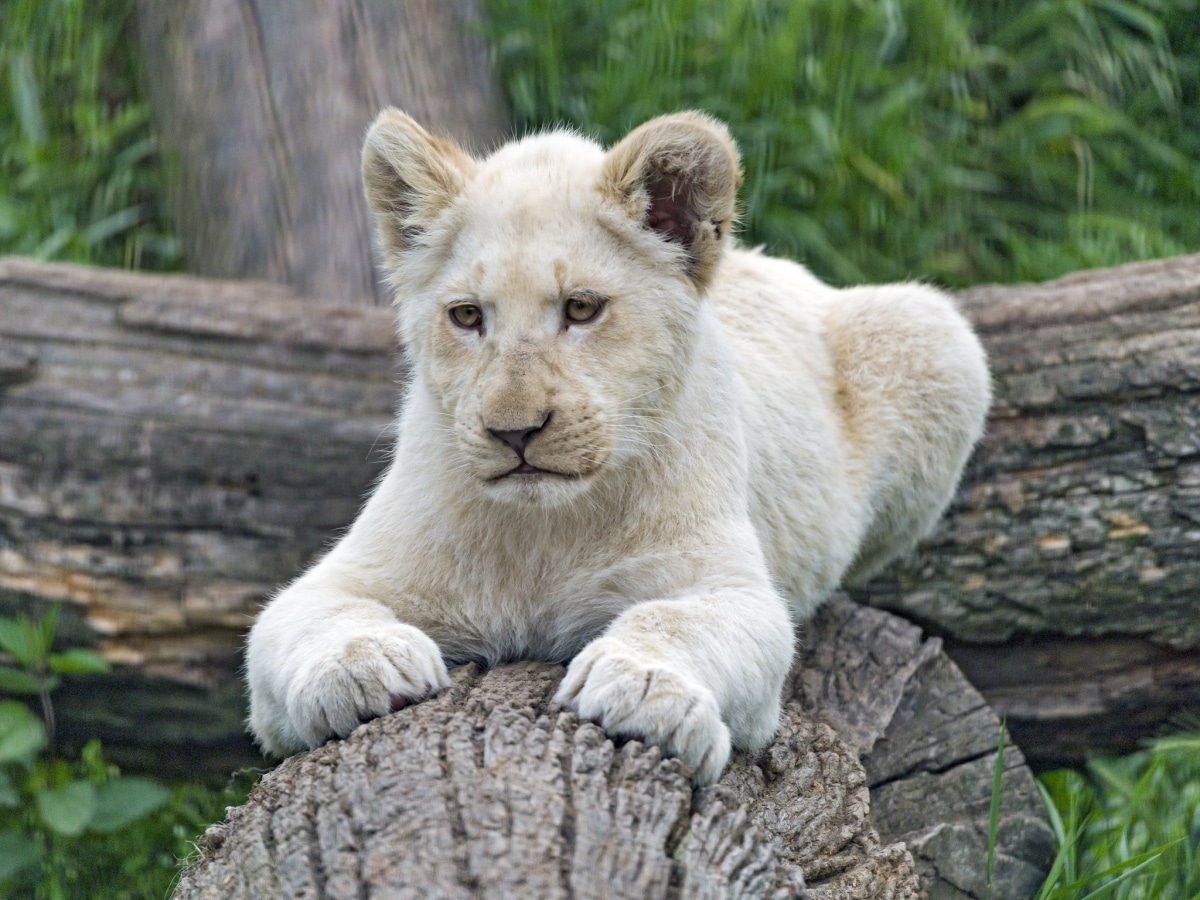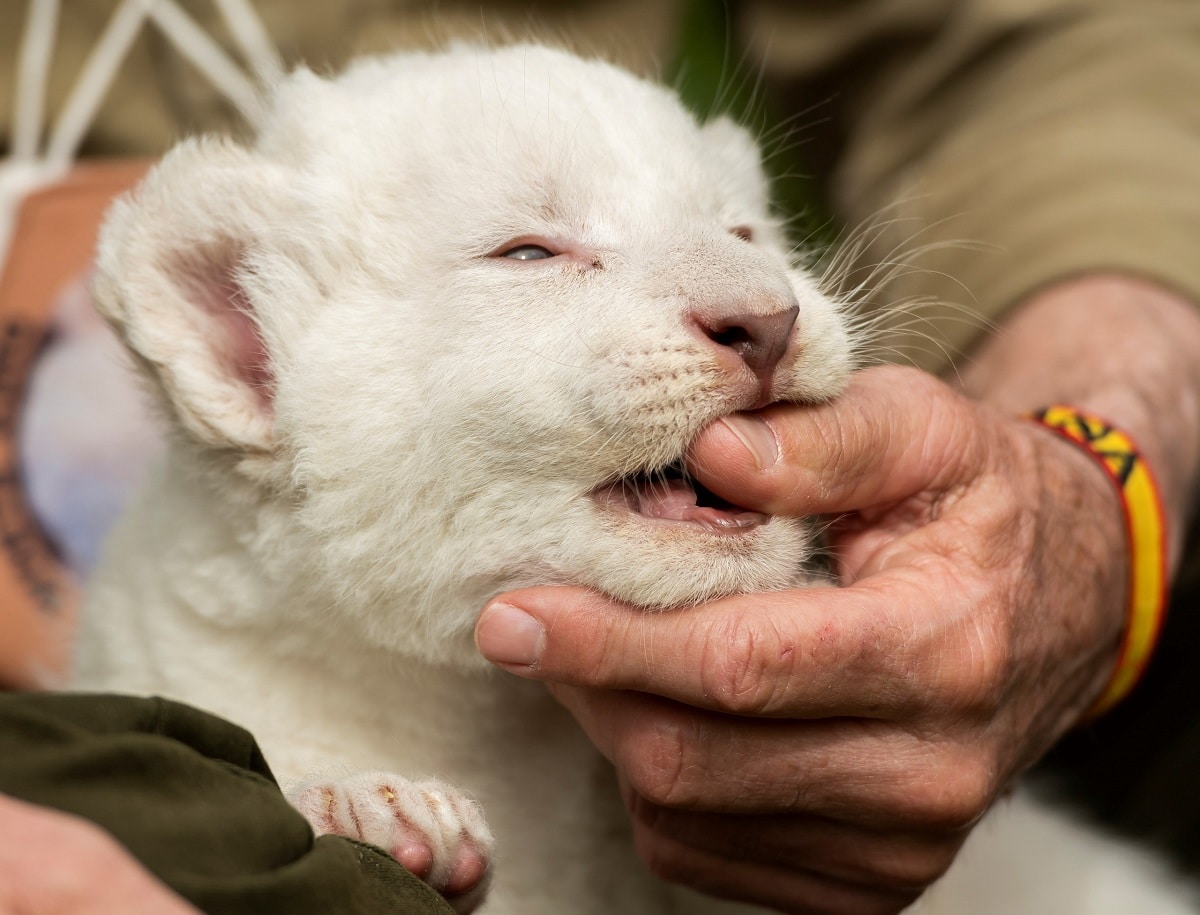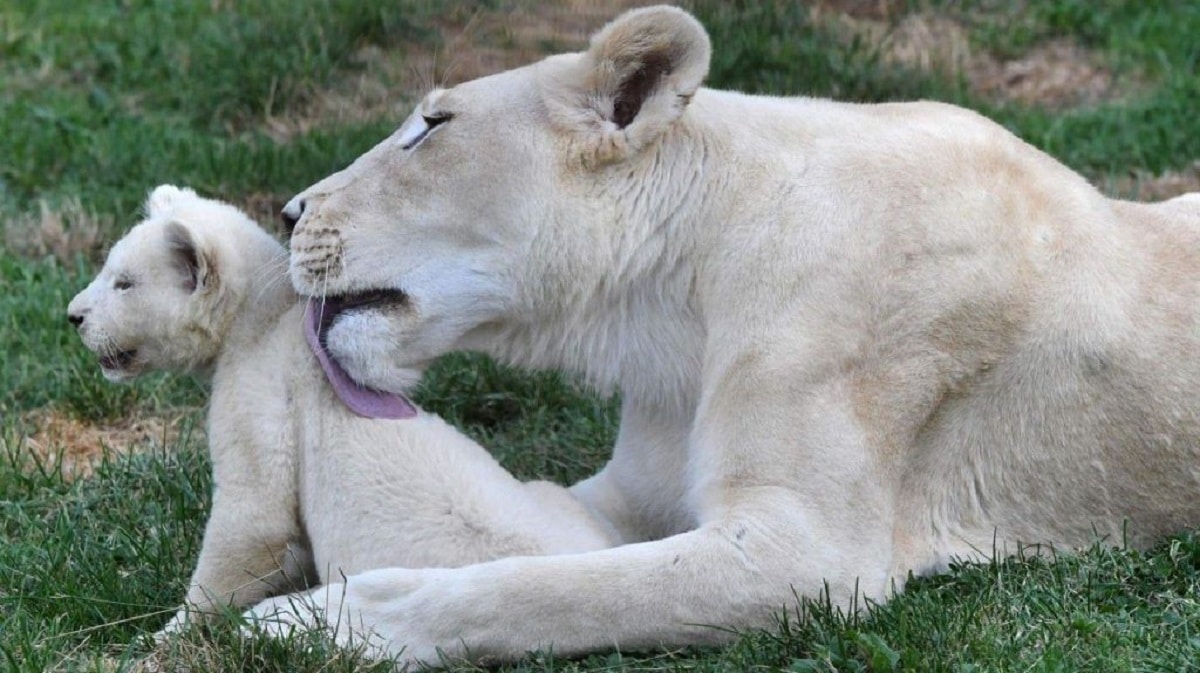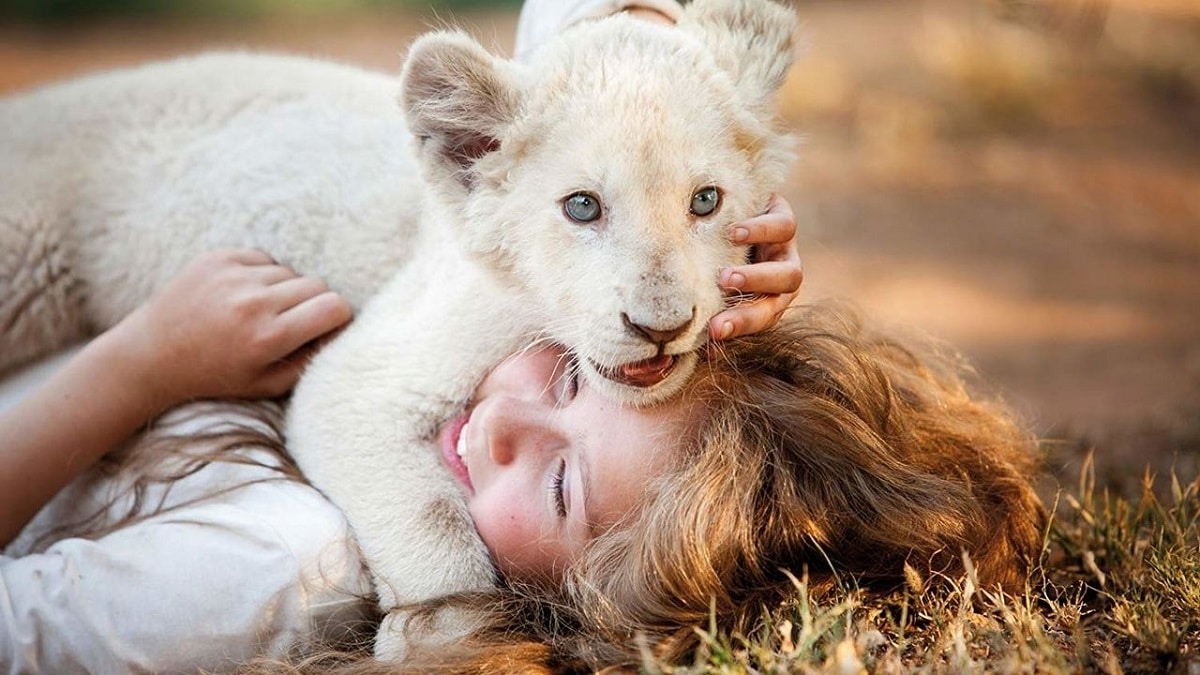
Image – Flickr/Tambako The Jaguar
The white lion is undoubtedly one of the most spectacular animals that you can see in their natural habitat or in captivity in reserves and zoos. However, they are at risk, which is why we try to keep them alive and encourage the birth of new offspring that maintain this same peculiar color.
Here we will explain curiosities about the white lion, why it is in danger of extinction and how you can collaborate to avoid it.
White lion: a genetic mutation

the white lions they are genetically the same subspecies as the South African lion or Transvaal lion (Panthera leo krugeri) and are found in some nature reserves of South Africa and in zoos around the world. For this reason, they are commonly known as african white lions. White lions are not albinos, but leucist.
What is leucist?
This means they have visible pigment in the eyes, paw pads, and lips. Therefore they can have hazel or gold, bluish gray or greenish gray eyes, while an albino animal lacks color in the iris. Leucistic trait is due to a recessive mutation in the gene for tyrosinase (TYR), the enzyme responsible for melanin production.
So a reduction in pigment production reduces the pigmentation of the coat, only leaving a little bit of pigmentation at the end of the ends. So, the less pigment the lion has throughout its fur, the paler it will be. As a result, this variant of lions range from blond to almost white. The males have a pale mane and spots on the tail instead of being black or dark as we are used to seeing them.
Another curious fact by which white lions differ is that they are more robust and corpulent than the other subspecies of lions, they can even reach 3 meters in length in the case of males and 2 meters in females.
Where does the white lion come from?
The natural geographic distribution of these lions includes four countries in southern Africa:
- South Africa. Specifically from the Kruger National Park, where there is the largest population
- Zimbabue
- Mozambique
- Botswana
How many copies are there currently?

Currently there is only 13 white lions in the wild, according to figures published by Global White Lion Protection Trust, a South African organization specialized in the protection and conservation of this animal. However, that number has increased to nearly 300 in captivity as white lions are born and raised in protected areas dedicated to protecting and promoting the survival of the species.
The international objective of conservation of these lions offers the hope of being able to strengthen this peculiar genetic variety and take it to a future reintroduction in its natural habitat. In fact, in 2004 started the hatchling reintroduction. These cubs were gradually reintroduced to wild lion prides, and came to have the same success rate as wild lions in hunting and adapting to the environment.
In the year 2013 A sampling study was begun to identify the genetic marker that determines the white color of the lion, and it was found that today there are some 3 herds of white lion in Timbavati. In addition to those in the zoological nuclei. In fact, in 2021, Here ., specifically in Seville, ha born on first white lion cub no health problems.
The white lion has a great cultural value for the local indigenous communities, that is why the main reason for this project is to rely on that importance in order to help protect the Kruger to Canyon Biosphere (K2C), where the largest population of these lions is.
Why is it extinct?

He is currently listed as vulnerable awarded by the IUCN. It is important to know its threats in order to create a plan for the conservation and reintroduction of the white lion. The main causes are:
- low birth rate. The fact that they have to be bred in captivity makes their production difficult. There is a high rate of natal mortality due to diseases, together with the few offspring that are born and inbreeding that makes existence difficult.
- Species trafficking. South Africa is where the largest population is found. There, "conservation farms" are used to perpetuate this peculiar animal, the problem is that many times the individuals themselves are not allowed to survive in the wild, and they are marketed to zoos in other places. This negatively affects their own survival because they are not given their natural space to advance on their own.
- loss of natural habitat. Added to this fact is climate change and malpractice in the human management of the territory (constructions, felling of trees, fencing, pollution...), this means that the white lions have a smaller and smaller territory and that they have less food and access to water.
How can I help its conservation?

There are numerous ways we can help white lion conservation. Priority is that the population becomes aware of the importance of research on the management, conservation and natural habitat of the white lion. There are many environmental and scientific organizations, both national and international, seeking the support of society to be able to carry out the measures that are possible to reintroduce these felines into their natural habitat.
Projects that focus on the protection of individuals that are in their natural habitat are more beneficial than those that focus on the survival of this feline in captivity, for example, the option of trading these specimens is eliminated.
So You can contribute your grain of sand in the following ways:
- Disseminate what these projects do
- Be a volunteer in any of these projects
- Make some kind of financial donation to help them with the grant
Here we leave you the trailer of the film Mia and the white lion, is suitable up to for the smallest of the house and It is a way to reach more to the conscience of all. Furthermore, what is impressive is that the scenes that take place with the white lion no computer generated images are used, they are real! I hope this information has been useful to you to learn more about the white lion and how to help it.